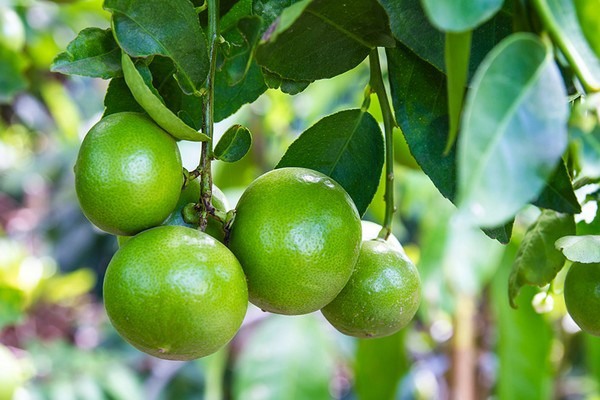Uncertainty is high right now. That's the feeling in the lime industry following yesterday's implementation of a 25 percent tariff on goods from Mexico and Canada.
After all, more than 90 percent of the limes in the U.S. come from the U.S.'s southern neighbor. "While tariffs are targeted to help with U.S. manufacturing or production, in limes, it has an adverse effect because the U.S. doesn't produce limes," says Steven Leal with S&J Distributing. "So a blanket tariff on a product the U.S. doesn't produce goes to the consumer. Shippers will have to impose that onto the end user in the U.S."
All of this is leaving lime shippers with a great sense of uncertainty. What is still being determined is whether limes are shipping at a certain price point or if adding on the tariff will work right away. "Or if there's so much hesitation on the increased price point that Mexico has to drop their sales to the U.S. It's a wait and see on that aspect," he says. "At the moment, people are implementing the 25 percent increase because we have to cover our costs for what's being imported in."
Other shipping regions
So what does this mean for lime production in countries such as Colombia and Peru which also ship limes, though aren't subjected to these tariffs? "They're at an advantage because Mexico has been hit with these," says Leal. "Mexico is competing with Colombia, Peru, Guatemala, and more and if they are dramatically cheaper, then we'll start losing a bit more market share to them."

That said, the concern is that production in countries such as Colombia isn't enough to supply the demand in the U.S.--that would take years to ramp up that kind of production. "I am betting though that they are doing everything they can to send as much as they can," he says.
However, given the volatility of tariff announcements, there's also a concern about what's to come. "If the tariffs are dropped like last time or postponed or tariffs are taken off the table, that's a problem. It takes a couple of weeks to get fruit here from those countries so if they get the ball rolling, and suddenly the tariffs are off for Mexico, they're not going to get what they're looking for. Or shippers who have committed might eat it a bit because Mexico won't be at that same disadvantage."
Waiting to find out
In all, he says the impact of these tariffs isn't going to be known for a little while which means growers and shippers are in a wait-and-see situation.
As for the lime supply from Mexico right now, it is consistent. "It's a little less but it's par for the course for this time of the year," says Leal. "Usually around March is when we start seeing a little less crop which coincides with an increase in demand with the better weather which leads to improved markets for this time of year. It's on par with what we've seen historically."
Greater volume from Mexico is anticipated for the end of April to the beginning of May. "That's when we see summer volumes show up. When we see a surge of small fruit, which typically happens at the beginning of May, that's when summer supply starts kicking in and that's usually when prices drop," he says.
 For more information:
For more information:
Steve Leal
S&J Distributing
Tel: +1-956-383-5325
steve@snjdistributing.com
https://www.snjdistributing.com/
